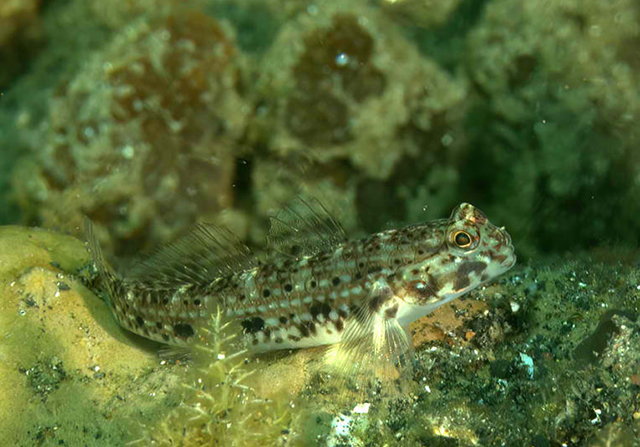| Gobiidae (Gobies), subfamily: Gobiinae |
| 6.5 cm SL (male/unsexed); 5.5 cm TL (female) |
|
demersal; marine; depth range 2 - 10 m |
| Eastern Indian Ocean: Western Australia and Northern Territory, Australia. Western Pacific: Philippines, Papua New Guinea, Queensland in Australia, New Caledonia, American Samoa, the Solomon Islands. Also reported from Indonesia (Ref. 8631) and Iriomotejima, Japan (Ref. 559). |
|
Dorsal spines (total): 7-7; Dorsal soft rays (total): 10-12; Anal spines: 1-1; Anal soft rays: 9-11; Vertebrae: 26-26. Upper pectoral fin rays entire. 3 spots forming a `V' on caudal base; black spot basally between dorsal spines V-VI; pectoral base, cheek and operculum with many dusky melanophores; pelvic fins black. Longitudinal black bar off distal part of upper jaw. Trunk scales ctenoid, predorsal cycloid. In male, anal fin dusky and when appressed, reaching or almost reaching caudal fin, appressed dorsal fin overlapping caudal fin. In female, appressed anal and dorsal fins extending within 1-2 scales from caudal (Ref. 420); longitudinal scale series 30-32; depth of body 4.8-5.8 in SL (Ref. 90102). |
| Found in shallow coastal sand flats, usually silty bottom in a few meters depth (Ref. 48637). |
|
Least Concern (LC); Date assessed: 27 August 2020 Ref. (130435)
|
| harmless |
|
Source and more info: www.fishbase.org. For personal, classroom, and other internal use only. Not for publication.

